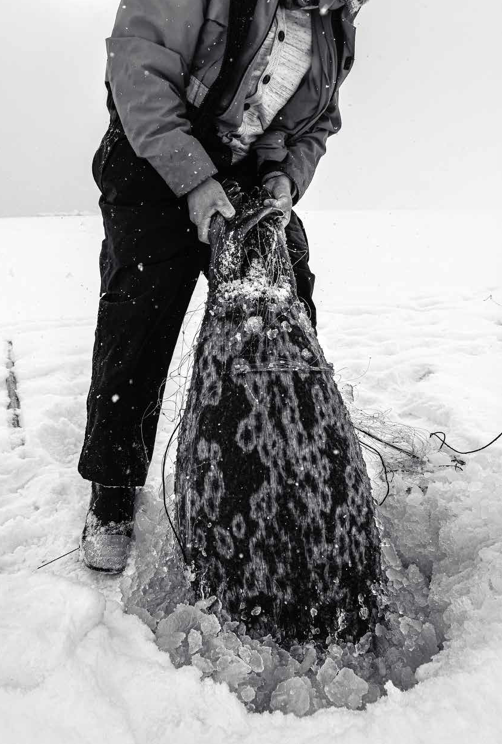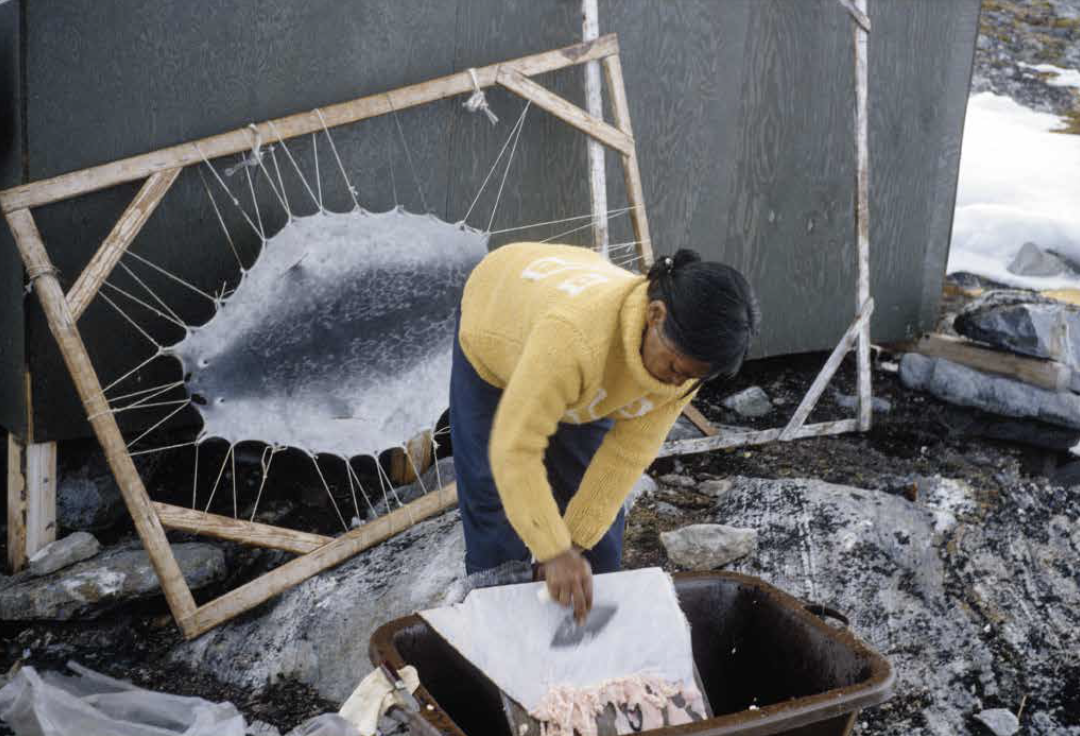
SEAL HUNTING
In the period 2500-800 BC the Saqqaq people were living at the Icefjord.
They had an early version of the kayak. To catch their game they used the harpoon.

Around 1200 Inuit, the Thule people, arrived at the Disko Bay. They are the ancestors of the Greenlandic people.
They developed the kayak into its present form and introduced floats. The floats prevented the harpooned seal from getting away or sinking to the bottom.
What other hunting weapon is similar to the harpoon?
This picture is of Ole Andreasen from ca. 1936. How many seals has he caught?
What does the word ancestors mean?
In winter the seal makes holes in the ice so that it can breathe. This makes it easy for the hunters to find the places where seals can be caught from the sea ice.
Hunting from the sea ice is called breathing hole hunting.

The first settlers used harpoon to catch the seals. Today they are caught with net.
What was special about the harpoon head the settlers developed? See page 29.
In the picture a seal is being drawn out of the breathing hole. What kind of seal is it?
For how many thousand years has breathing hole hunting been known?
The ringed seal has always been important food for the settlers at the Icefjord.
Seal meat contains high amounts of vitamins C and D which are needed to prevent illnesses.

All of the seal was used. The blubber that was not eaten, provided fuel and light. The skin was used for clothing and kayaks.
What is the woman in the picture doing?
Make a list of the things a seal can be used for. My list:
Why was it important to eat seal meat – especially in winter?
In the period 2500-800 BC the Saqqaq people were living at the Icefjord.
They had an early version of the kayak. To catch their game they used the harpoon.

Around 1200 Inuit, the Thule people, arrived at the Disko Bay. They are the ancestors of the Greenlandic people.
They developed the kayak into its present form and introduced floats. The floats prevented the harpooned seal from getting away or sinking to the bottom.
What other hunting weapon is similar to the harpoon?
This picture is of Ole Andreasen from ca. 1936. How many seals has he caught?
What does the word ancestors mean?
In winter the seal makes holes in the ice so that it can breathe. This makes it easy for the hunters to find the places where seals can be caught from the sea ice.
Hunting from the sea ice is called breathing hole hunting.

The first settlers used harpoon to catch the seals. Today they are caught with net.
What was special about the harpoon head the settlers developed? See page 29.
In the picture a seal is being drawn out of the breathing hole. What kind of seal is it?
For how many thousand years has breathing hole hunting been known?
The ringed seal has always been important food for the settlers at the Icefjord.
Seal meat contains high amounts of vitamins C and D which are needed to prevent illnesses.

All of the seal was used. The blubber that was not eaten, provided fuel and light. The skin was used for clothing and kayaks.
What is the woman in the picture doing?
Make a list of the things a seal can be used for. My list:
Why was it important to eat seal meat – especially in winter?




